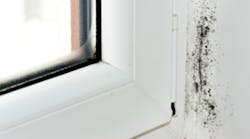Thursday Troubleshooter: Dental staff is ignoring infection control practices
QUESTION: I work in a dental office in which I think there is mold on the windowsill. The extracted teeth are thrown in regular garbage, autoclaves are in the same rooms as patients, autoclaves are never cleaned, and numerous other complaints. What should I do to keep our practice from getting into trouble?
ANSWER FROM NOEL KELSCH, RDHAP, Infection Control Specialist, noelkelsch.com:
Clearly from your statements you know that these things are all wrong. So the hard question becomes: what are you willing to do about changing the environment? Have you talked to your employer? Have you stated that you care about him or her and the staff and that you're concerned? Talking directly in a nonthreatening manner can be the start of change.
Have you supplied the office with resources and information to make a difference? Have you suggested that the office needs training and that you want to protect your employer and staff?
We are part of the problem if we do not bring these issues forward. Being complacent allows the issues to continue. We never want to “watch” risks that can impact patients and staff. What you are describing is just that. Thank you for having the courage to ask the questions.
Your questions are multifaceted and involve many issues. Let’s break this down to the requirements and recommendations.
1. OSHA oversees the employees. They have requirements. They are there to make sure everyone goes home safe at the end of the day. They focus on making sure you have a safe environment, training, and equipment to help you stay safe and do your job. Your state OSHA will come and inspect the mold that is present and make sure that it is not a risk to you. You can call anonymously at 800-321-6742, which is the toll free number in the US.
2. The second part of this is your dental board, health department, and the Centers for Disease Control and Prevention (CDC). You can go to your dental board or health department, which have laws to govern practices, and report the issues. The health department is there is help you with any concerns and answer any questions that relate to the safety of everyone in the practice and community.
The CDC has a plethora of great resources and recommendations for the practice which you can share with your dentist. The following CDC documents that came out in May, 2016, will take you step-by-step through the processes that are necessary to stay safe in the dental environment. Give these documents to your boss. Point out that there should be someone in the practice assigned as the infection prevention coordinator. (See page 6 of the Summary of Infection Prevention Practices in the Dental Setting.)
http://www.cdc.gov/oralhealth/infectioncontrol/pdf/safe-care.pdf
http://www.cdc.gov/oralhealth/infectioncontrol/pdf/safe-care-checklist.pdf
http://www.cdc.gov/oralhealth/infectioncontrol/pdf/dentaleditable_tag508.pdf
http://www.cdc.gov/oralhealth/infectioncontrol/pdf/recommendations-excerpt.pdf
http://www.cdc.gov/oralhealth/infectioncontrol/guidelines/
These great documents answer your questions. The infection prevention checklist covers all the areas that you're having challenges with. Print it out and share it with your employer. The "Recommendations from the 2003 Guidelines" presents many answers in a manner that is easy to apply, for example, with the extracted teeth you mentioned.
H. Handling of extracted teeth
1. Dispose of extracted teeth as regulated medical waste unless returned to the patient (IC) (13,14).
2. Do not dispose of extracted teeth containing amalgam in regulated medical waste intended for incineration (II).
3. Clean and place extracted teeth in a leak proof container, labeled with a biohazard symbol, and maintain hydration for transport to educational institutions or a dental laboratory (IC) (13,14).
4. Heat-sterilize teeth that do not contain amalgam before they are used for educational purposes (IB) (403,405,406).
Using these documents can make the process much simpler. I hope that you see how much impact you can have on the practice by sharing this information. Your input could protect a lot of people and change a lot of futures. Thank you for caring enough to send in your question.
RECENT THURSDAY TROUBLESHOOTERS:
Dental team member's tattoo not going over well
Dentist allows toxic staff "friend" to ruin team morale
Dental assistant doesn't deserve bad treatment
Send your questions for the experts to answer. Responses will come from various consultants, many of whom are associated with Speaking Consulting Network, Academy of Dental Management Consultants, Dental Consultant Connection, and other expert dental support and human resources organizations. Their members take turns fielding your questions on DentistryIQ, because they are very familiar with addressing the tough issues. Hey, it's their job.
Send your questions to [email protected]. All inquiries will be answered anonymously every Thursday here on DIQ.





